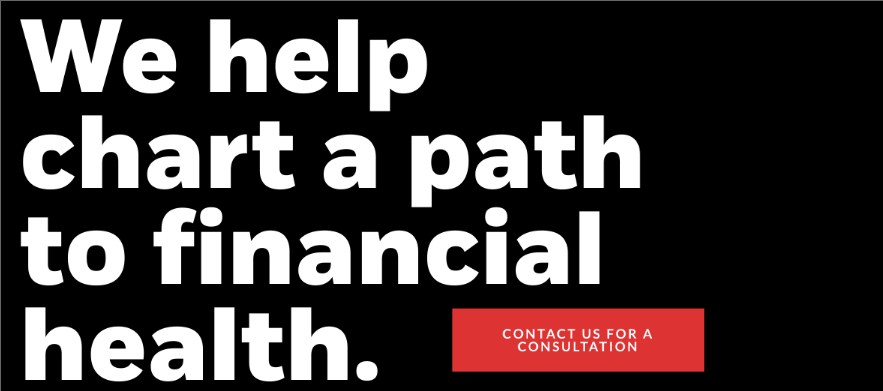Employee Retention Tax Credit (ERC) And how your Business can Retroactively Claim Your payroll tax credit through 2024
As a small to medium-sized business, it’s likely that you were negatively impacted by COVID-19, and did you keep employees on the payroll during the pandemic?
And if you remember, due to the shutdowns and financial stress Covid had on businesses, in March of 20202 Congress passed a huge stimulus package called the Coronavirus Aid, Relief, and Economic Security (CARES) Act to help get businesses back on their feet — with a special section called the Employee Retention Credit (ERC), specifically added to help businesses like yours.
The Employee Retention Credit (ERC) is a payroll tax refund from the United States Treasury Department applicable to businesses that kept employees on payroll during the pandemic.
ERC Key Takeaways
- The ERTC is a refundable credit you can claim on qualified wages you paid employees — upwards of 70%
- You have three years to claim the credit retroactively from when you filed your original tax return
- There are currently CPAs and payroll companies that are offering services to help businesses claim the Employee Retention Tax Credit retroactively to March 12, 2020
What is the Employee Retention Credit?
The ERC also referred to as ERTC is a refundable tax credit that businesses can claim on qualified wages, including certain health insurance costs, paid to employees. The Employee Retention Credit (ERC) was developed to encourage and support employers who retained existing employees throughout 2020 and for the first three quarters of 2021 by offering a generous payroll tax refund through the IRS. In January 2021, the IRS published a press release titled “ New law extends COVID tax credit for employers who keep workers on payroll”. A company called Innovation Refunds states that eligible businesses can receive a refund of up to $5,000 per employee for all of 2020 and up to $7,000 per employee kept on the payroll for each quarter for Q1 through Q3 of 2021. That’s a total refund of up to $26,000 per employee kept on your payroll.
CARES Act – 2020
For employers who qualify, including borrowers who took a loan under the initial PPP, the credit can be claimed against 50 percent of qualified wages paid, up to $10,000 per employee annually for wages paid between March 13 and Dec. 31, 2020.
Consolidated Appropriations Act – 2021
Employers who qualify, including PPP recipients, can claim a credit against 70% of qualified wages paid. Additionally, the amount of wages that qualify for the credit is now $10,000 per employee per quarter.
ERC has been underutilized, with most eligible businesses not claiming their refund because many business owners are prematurely disqualifying themselves due to misinformation and rumors about who does or doesn’t qualify.
How Does a Business Claim the Employee Retention Tax Credit Retroactively?
Paychecx published an article about this toic and stated that “businesses can no longer pay wages to claim the Employee Retention Tax Credit, but they have until 2024 to do a look back on their payroll during the pandemic and retroactively claim the credit by filing an amended tax return.” Most employers, including colleges, universities, hospitals and 501(c) organizations following the enactment of the American Rescue Plan Act, could qualify for the credit. Previously, the Consolidated Appropriations Act expanded qualifications to include businesses who took a loan under the Paycheck Protection Program (PPP), including borrowers from the initial round of PPP who originally were ineligible to claim the tax credit.
Your small business is eligible for an ERC refund if it meets either of the following criteria:
You experienced a significant decline in gross receipts of 20% for 2021; 50% for 2020 per calendar quarter compared to the same quarter of 2019. Or you had operations that were impacted by government orders due to COVID-19, resulting in limitations of commerce, travel, or meetings. If your business was impacted by one or more of the following, you qualify:
- Your business operations were interrupted.
- There were interruptions with your supply chain.
- There was an inability to access equipment.
- Your business had a limited capacity to operate.
- You were unable to work with your vendors.
- Your hours of operation were reduced.
- Your available services offered to customers were limited or reduced.
- Your business was partially or fully shut down due to a government order.
The IRS notice 2021-20 includes seven examples (Q&A No. 49) with scenarios of how an employer with a PPP loan determines which wages, if any, are eligible for the tax credit. The amount of wages eligible largely depends on how the qualified wages were reflected on the PPP loan forgiveness application. Qualified wages included in reported payroll costs on the forgiveness application may be utilized in certain conditions where more expenses than necessary were used to justify the loan forgiveness. In these cases, the IRS will take the minimum wage cost necessary when combined with other eligible expenses to justify loan forgiveness.
However, the IRS makes it clear that expenses eligible for PPP forgiveness that were not included in the loan forgiveness application cannot be factored in after the fact. Consequently, it’s important to ensure all eligible expenses, including non-payroll costs such as utilities, rent and operations expenses, to name a few, are included on PPP loan forgiveness applications in order to maximize the qualified wages available for ERC.
According to an article published by SHRM, employers may still claim the ERTC retroactively by filing Form 941-X, Adjusted Employer’s Quarterly Federal Tax Return or Claim for Refund, for each quarter they paid qualifying wages.The IRS includes three examples (Q&A No. 57) to highlight the process. Employers may file Form 941-X up to three years after the original payroll taxes were due, which is typically on April 15. Thus, employers may claim the 2020 ERTC until April 15, 2024, and the 2021 ERTC until April 15, 2025. Employers can retroactively file for each quarter they paid qualifying wages.
In effect, qualifying employers may be eligible for up to a $5,000 credit per employee for the 2020 tax year and up to $21,000 per employee in 2021 based on the amount of qualifying wages. Recovery startup businesses are limited to $50,000 in credit per calendar quarter.
How much does my business qualify for?
Determining the exact amount that your business is owed is a complex accounting process. Though these are payroll tax credits, what you’ve paid in payroll tax isn’t the only factor in your ERC calculations. Your refund amount is based on many factors, including:
- Qualifying quarters
- PPP loans
- Number of employees
- Group health premiums
- Hours worked
- Wages paid
- Participation in other government programs
Conclusion
Employers may want to consider reassessing their eligibility for the ERTC for the 2020 and 2021 tax years sooner rather than later. Employers might start with determining what type of impact COVID-19 governmental orders had on their businesses in 2020 and 2021. Employers may also want to consider revisiting their 2020 and 2021 financial statements to see if they experienced a substantial decline in gross receipts.
Once an employer has a basic understanding of whether it is eligible, then it may determine qualifying wages and calculate the credit amount, and then with the help of a CPA or payroll specialist, you can process amended returns.
If you are interested in finding out if your business qualifies, Paychex offers an ERC assessment review you can fill out to see if you qualify, or you can also contact Huckabee CPA and get a free consultation.












